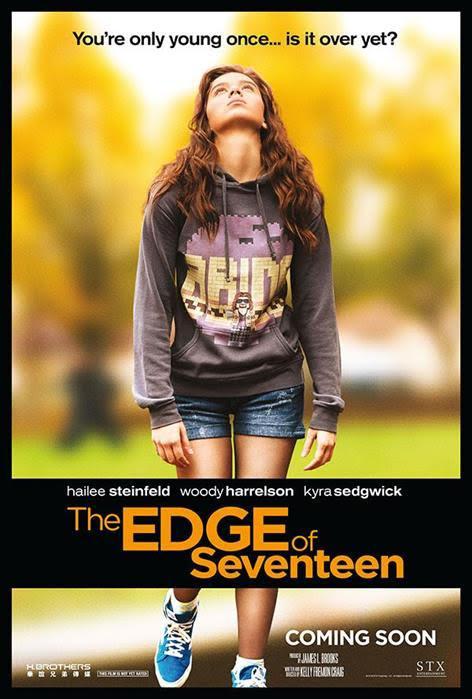‘Edge of Seventeen’ Models Teen Angst in Digital Age
Written and directed by Kelly Fremon Craig, “The Edge of Seventeen” will be premiered in theaters on November 18th.
November 18, 2016
Against the expectations that tend to be held around teen movies, writer and director Kelly Fremon Craig has reinvented and revived the genre with her directorial debut, “The Edge of Seventeen.” The film, produced by Academy Award-winner James L. Brooks, fits in with the stereotypes of its genre but also subverts them to provide a sage look at what’s it’s like to navigate high school as a Generation Z kid.
Hailee Steinfeld stars as the protagonist, Nadine, a somewhat-obnoxious teenage girl who has always felt a little distant from her peers. This sentiment is only amplified by Nadine’s perfect twin brother (Blake Jenner), who seems to have it all: looks, friends and their mother’s (Kyra Sedgwick) affection.
But Nadine’s world is turned upside-down when her best friend (Haley Lu Richardson) starts dating her brother — at least, that’s how she sees it.
“Seventeen” attempts to capture the spirit of its John Hughes predecessors for a Gen-Z audience, and generally succeeds. Nadine’s nonchalant narration may fall flat for older audiences who are unfamiliar with the contemporary trend of dry humor and unable to relate to the real source behind her pain. But for the generation that speaks this way, Nadine’s candor is simultaneously hilarious and affecting.
Older audiences can still identify with the adults in Nadine’s life, some of whom understand her better than others. If Kyra Sedgwick’s portrayal as Nadine’s flighty and narcissistic mother doesn’t do the trick, Woody Harrelson’s Mr. Bruner provides the dry witticisms we expect from him enough to put Nadine in her place.
While not quite as explicit as 2012’s “The Perks of Being a Wallflower,” “The Edge of Seventeen” effectively paints a strong picture of teenage mental health. For those who identify with Nadine or even her brother, the emotions — regarding loss, or simply not feeling good enough for one’s peers in a digital age — are palpable.
While specific in its characterization of Nadine, the film also broadly and tastefully deals with what it’s like to be a modern teenage girl. Nadine is both easy to identify with and fully fleshed-out as her own character — at least, as fully fleshed-out as one can be at 17 years old. Viewers cringe at Nadine’s ignorance and impulsivity and can sympathize with her at the same time.
There is much more going on in this film than is visible at its surface. “Seventeen” doesn’t entirely dismiss the conventions of its genre — there’s more or less of a happy ending, and a lot of the major plot points seem obvious and derivative. But if you look beyond these elements, the film is working beyond the commercially-successful tropes of its genre in order to create a work that uniquely deals with adolescence in an increasingly difficult-to-navigate teenage world.
“The Edge of Seventeen” premieres in theaters nationwide on Nov. 18.
Email Natalie Whalen at [email protected].

























































































































































